Themed collection Suprabiomolecular Chemistry

Flexible imidazolium macrocycles: building blocks for anion-induced self-assembly
This feature article summarises recent contributions of the authors in the area of flexible imidazolium macrocycle and related anion-induced supramolecular self-assembly.
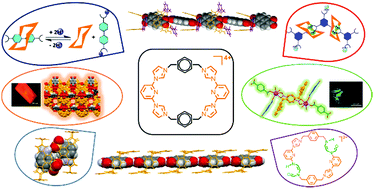
Chem. Commun., 2017,53, 9684-9696
https://doi.org/10.1039/C7CC04661H
Bioactive clusters promoting cell penetration and nucleic acid complexation for drug and gene delivery applications: from designed to self-assembled and responsive systems
Recent developments in the (self-)assembly of cationic clusters promoting nucleic acids complexation and cell penetration open the door to applications in drug and gene delivery.
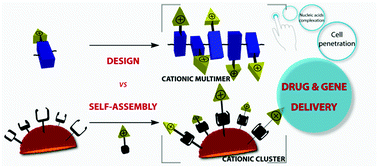
Chem. Commun., 2016,52, 4257-4273
https://doi.org/10.1039/C5CC09715K
Thermally activated isomeric all-hydrocarbon molecular receptors for fullerene separation
A new thermally activated all-hydrocarbon rigid macrocycle receptors system, cyclo[8](1,3-(4,6-dimethyl)benzene) (CDMB-8) has been reported.
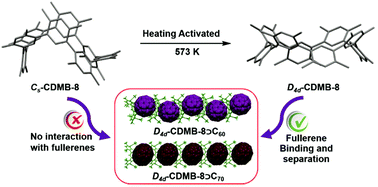
Chem. Commun., 2019,55, 3701-3704
https://doi.org/10.1039/C8CC09911A
Reviving old protecting group chemistry for site-selective peptide–protein conjugation
Unprotected peptides equipped with property enhancing moieties and a Cys(Scm) residue can be site-selectively conjugated to proteins via crossed-disulfide formation.
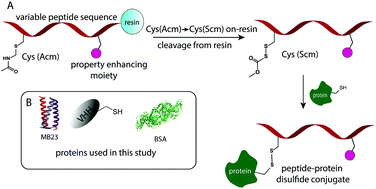
Chem. Commun., 2018,54, 11929-11932
https://doi.org/10.1039/C8CC06684A
Ultrasound-induced gelation of a giant macrocycle
Supramolecular gelation of a 68-membered macrocycle triggered by sonication.

Chem. Commun., 2018,54, 10874-10877
https://doi.org/10.1039/C8CC04742A
Uracil grafted imine-based covalent organic framework for nucleobase recognition
An imine-based covalent organic framework (COF) decorated in its cavities with uracil groups has shown selective recognition towards adenine in water.
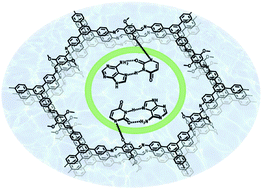
Chem. Commun., 2018,54, 8729-8732
https://doi.org/10.1039/C8CC04346A
Polyvinyl alcohol–boronate gel for sodium hydroxide extraction
Gels formed from commercially available polyvinyl alcohol (PVA) and 1,4-benzene diboronic acid (BdBA) in DMSO absorb NaOH efficiently from a bulk aqueous solution decreasing its pH.
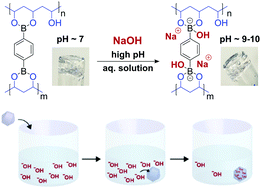
Chem. Commun., 2018,54, 5407-5409
https://doi.org/10.1039/C8CC02610F
A giant M2L3 metallo-organic helicate based on phthalocyanines as a host for electroactive molecules
An unprecedented phthalocyanine-based, metallo-organic helicate (Fe2Pc3) has been assembled and proved as a host for large redox-active guests such as fullerenes and naphthalenediimides.
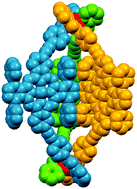
Chem. Commun., 2018,54, 2651-2654
https://doi.org/10.1039/C7CC09528G
Selective G-quadruplex binding by oligoarginine-Ru(dppz) metallopeptides
We demonstrate that both the R8 functionalization and its interplay with the ancillary ligand have and an important role in the G-quadruplex recognition process by Ru(dppz) metallopeptides.
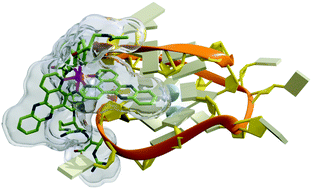
Chem. Commun., 2018,54, 658-661
https://doi.org/10.1039/C7CC08286J
Controlling G-quadruplex formation via lipid modification of oligonucleotide sequences
G-quadruplexes (G4) represent attractive supramolecular scaffolds.
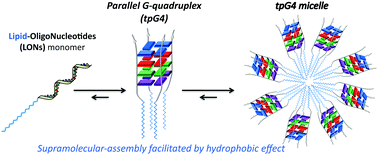
Chem. Commun., 2017,53, 11560-11563
https://doi.org/10.1039/C7CC05693A
Syntheses of potent teixobactin analogues against methicillin-resistant Staphylococcus aureus (MRSA) through the replacement of L-allo-enduracididine with its isosteres
We have synthesised 8 simplified, potent teixobactin analogues by replacing L-allo-enduracididine with its isosteres.

Chem. Commun., 2017,53, 7788-7791
https://doi.org/10.1039/C7CC04021K
In situ control of polymer helicity with a non-covalently bound photoresponsive molecular motor dopant
A molecular motor based photoswitchable dopant can induce and switch the helical chirality of a poly(phenylacetylene) dynamic helical polymer.
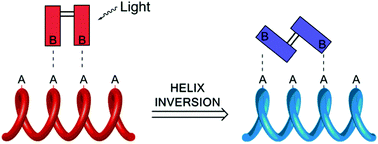
Chem. Commun., 2017,53, 6393-6396
https://doi.org/10.1039/C7CC03188B
Microscale coiling in bis-imidazolium supramolecular hydrogel fibres induced by the release of a cationic serine protease inhibitor
A gemini dicationic amphiphile forms gels with a serine protease inhibitor, which could be used in a new approach to the treatment of Rosacea, and the release of the drug causes remarkable gel fibre coiling.

Chem. Commun., 2017,53, 4509-4512
https://doi.org/10.1039/C6CC09392B
A red-NIR fluorescent dye detecting nuclear DNA G-quadruplexes: in vitro analysis and cell imaging
Light-up of nuclear G-quadruplex DNA in cells by an aggregating and red/NIR emitting dye.

Chem. Commun., 2017,53, 2268-2271
https://doi.org/10.1039/C6CC08492C
A peptide functionalized nanomotor as an efficient cell penetrating tool
A novel peptide-nanomotor based hybrid system is presented for fast cell penetration and cargo delivery.
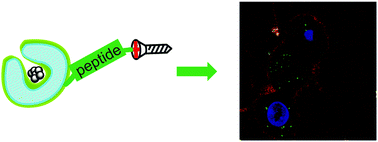
Chem. Commun., 2017,53, 1088-1091
https://doi.org/10.1039/C6CC09169E
Superfluorinated and NIR-luminescent gold nanoclusters
A novel class of superfluorinated gold nanoclusters obtained from a branched thiol with 27 equivalent 19F atoms per molecule, which combine both NIR photoluminescence and 19F NMR properties, thus representing a promising multimodal nanoplatform for bioimaging applications.

Chem. Commun., 2017,53, 621-624
https://doi.org/10.1039/C6CC09324H
Chiral supramolecular organization and cooperativity in DNA-templated assemblies of ZnII–chromophore complexes
Templated cooperative binding induced assembly of chromophores is achieved via interactions between Zn-complexes and the DNA phosphodiester backbone.
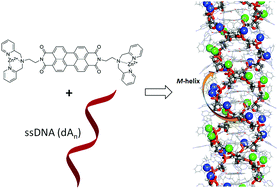
Chem. Commun., 2016,52, 13873-13876
https://doi.org/10.1039/C6CC07414F
Well-defined, persistent, chiral phthalocyanine nanoclusters via G-quadruplex assembly
Monodisperse nanoclusters are produced via G-quadruplex assembly with potassium salts in which red-absorbing phthalocyanine dyes are arranged in a well-defined chiral organization.

Chem. Commun., 2016,52, 9446-9449
https://doi.org/10.1039/C6CC04152C
Intramolecular transport of small-molecule cargo in a nanoscale device operated by light
A light-operated molecular nanodevice is able to transport an acetyl cargo intramolecularly over a distance of about 2 nm.

Chem. Commun., 2016,52, 6765-6768
https://doi.org/10.1039/C6CC02382G
A naphthalimide derived fluorescent sensor for solid-phase screening of cucurbit[7]uril–guest interactions
A fluorescent sensor displaying a significant increase in emission upon binding CB[7] was developed and utilized in a surface-bound displacement assay for the rapid detection of CB[7] encapsulation of therapeutically relevant drug classes.
![Graphical abstract: A naphthalimide derived fluorescent sensor for solid-phase screening of cucurbit[7]uril–guest interactions](/en/Image/Get?imageInfo.ImageType=GA&imageInfo.ImageIdentifier.ManuscriptID=C5CC08350H&imageInfo.ImageIdentifier.Year=2016)
Chem. Commun., 2016,52, 2307-2310
https://doi.org/10.1039/C5CC08350H
Retaining individualities: the photodynamics of self-ordering porphyrin assemblies
Retained photochemical properties – a simple porphyrin–polyDMA conjugate with the ability to self assemble into large (∼1 μm) vesicles in water. The photodynamics are remarkably preserved despite the extensive aggregation.
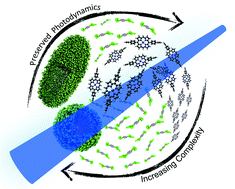
Chem. Commun., 2016,52, 1938-1941
https://doi.org/10.1039/C5CC09095D
In situ iodination and X-ray crystal structure of a foldamer helix bundle
We report here the efficient in situ iodination of tyrosine-type side-chains located within a foldamer helix bundle, permitting structure determination using single-wavelength anomalous diffraction (SAD) methods.

Chem. Commun., 2016,52, 1202-1205
https://doi.org/10.1039/C5CC07916K
Efficient inhibition of human AP endonuclease 1 (APE1) via substrate masking by abasic site-binding macrocyclic ligands
Bis-naphthalene macrocycles bind to abasic sites in DNA, leading to efficient inhibition of their cleavage by human AP endonuclease 1 (APE1).

Chem. Commun., 2015,51, 15948-15951
https://doi.org/10.1039/C5CC06084B
Promoting strand exchange in a DNA-templated transfer reaction
A comb-type polylysine–polydextran copolymer increases the turnover in DNA-templated acyl transfer reactions by promoting strand exchange.
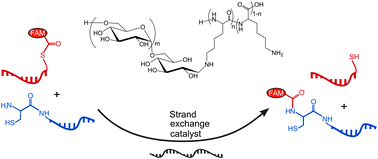
Chem. Commun., 2013,49, 618-620
https://doi.org/10.1039/C2CC36162K
Label-free fluorescence detection of the depurination activity of ribosome inactivating protein toxins
A simple label-free fluorescence hybridization assay to monitor the depurination activity of toxic ribosome inactivating proteins by using an abasic site sensing fluorescent ligand has been developed.
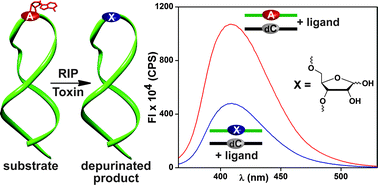
Chem. Commun., 2012,48, 501-503
https://doi.org/10.1039/C1CC16667K
Helix stabilization through pyridinium–π interactions
Intramolecular cation–π interactions between a methyl pyridinium ion and a phenyl ring stabilize the folded structure of a phenyleneethynylene oligomer.

Chem. Commun., 2004, 1480-1481
https://doi.org/10.1039/B405980H
About this collection
This collection celebrates current achievements and future perspectives in Suprabiomolecular Chemistry, highlighting the fantastic work published by the speakers at this year’s SupraBio 2019 meeting.